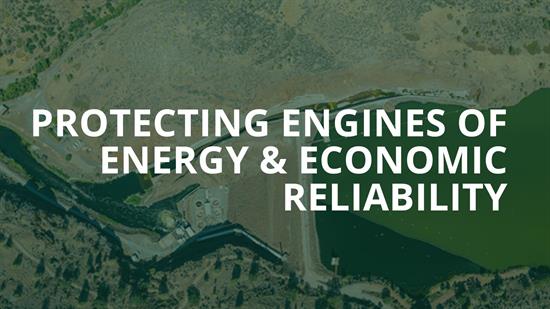BRANDED: Protecting engines of energy and economic reliabilityBy Reps. Doug LaMalfa (CA-01) and Cliff Bentz (OR-02)
Washington,
September 29, 2022
BRANDED: Protecting engines of energy and economic reliability
By Reps. Doug LaMalfa (CA-01) and Cliff Bentz (OR-02) Hydropower is the oldest source of renewable energy in the United States and accounts for nearly a third of total U.S. renewable electricity generation. Hydroelectric dams play a critical role in the resiliency of the West’s electrical grid, the preservation of our landscape, flood control, the creation of space for outdoor recreational activities, and many of these dams assist in the delivery of water to farms for agriculture production. Hydropower is a win for the environment, domestic energy production, and economic development in rural areas. So why is hydropower under attack? Because some outlier environmental groups have claimed that dam removal is necessary for fish health, even though these dams provide stored water for fish in low water years and the needed cold water for fish in hot summers. Residents in the Klamath Basin in Southern Oregon and Northern California know about this struggle because of the proposed Klamath River dam removal – the largest dam removal project in U.S. history. For decades, PacifiCorp (the owner of the dams), local municipalities, tribes, agriculture producers, and conservationists have gone back and forth arguing the benefits and drawbacks of the four Klamath Dams – Copco #1, Copco #2, Iron Gate, and J.C. Boyle. Dam removal advocates claim the dams block salmon and steelhead spawning and rearing habitat in the Upper Basin, even though their only science is a questionable Master’s thesis. These advocates have conveniently avoided discussions of other factors that have caused salmon and steelhead populations to decline, such as overfishing, pollution from forest fires, a marginal population in a warm river, and disease. They irresponsibly ignore the immense amount of sediment behind each dam, and how releasing it will impact water quality and river health, including the years long decimation of the very salmon runs they claim to want to protect. Nor have they considered how dam removal will affect other wildlife species who reside near the river and in the reservoirs, such as Canada Geese, sandpipers, Western Pond Turtles, and crayfish. It is essential that the conversation regarding dam removal consider the big picture, how this action will affect the Basin’s entire ecosystem and the people who live there, rather than base solutions solely on hypothetical scenarios for salmon. Those who support keeping the dams know the true benefits they bring to the area. The Klamath River Hydroelectric Project generates, annually, enough low-cost, reliable power for 70,000 households. The dams provide good-paying, technical jobs and are the largest single private taxpayer in the county of Siskiyou. The reservoirs created by each dam are critical to the area’s firefighting efforts, ground water recharge, pulse flows for clearing debris, and flood control. Removing hydroelectric dams from our energy grid will drive up energy costs, decimate local jobs, and increase dependency on oil and natural gas – something both California and Oregon have opposed. The proper and best position on these dams is crystal clear: hydropower provides renewable, cheap energy to our power grid around the clock. It’s unconscionable that so-called environmental advocates are forcing dam removals across the West without the scientific evidence to back up their ideas, and no acknowledgement of the catastrophic consequences that could occur from these actions. As the Federal Energy Regulatory Commission advances the removal of four dams on the Klamath, and elsewhere across the West, we must continue the fight to protect these engines of energy and economic reliability. Doug LaMalfa represents California's 1st Congressional District and serves as Vice Chair of the Congressional Western Caucus. Cliff Bentz, a Member of the Congressional Western Caucus, represents Oregon's 2nd Congressional District. |
Stay Connected
Use the following link to sign up for our newsletter and get the latest news and updates directly to your inbox.


